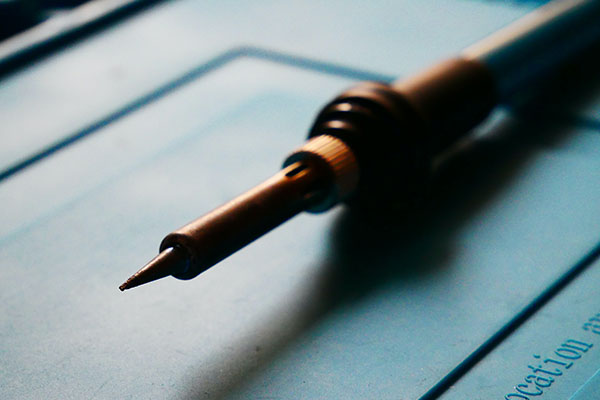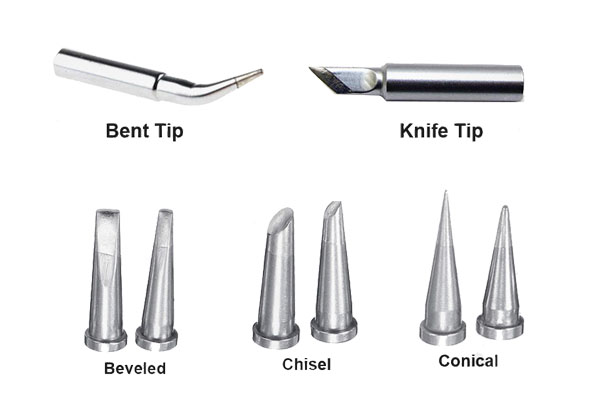
Soldering iron tips play a crucial role in achieving precise and efficient soldering results. Whether you're a hobbyist or a professional, understanding the various types, sizes, and uses of soldering iron tips is essential for successful soldering projects. In this comprehensive guide, we will explore everything you need to know about soldering iron tips and how they can enhance your soldering experience.


Chisel Tip: The chisel tip is the most common and versatile type of soldering iron tip. Its flat and wide shape allows for efficient heat transfer, making it ideal for general soldering tasks, such as through-hole soldering, wire connections, and component soldering.
Conical Tip: The conical tip features a pointed shape that tapers to a fine point. It provides precision and is perfect for delicate soldering work, such as surface mount soldering, intricate circuitry, and fine-detail soldering.
Bevel Tip: The bevel tip has a slanted edge that combines the benefits of both the chisel and conical tips. It offers a balance between precision and surface contact, making it suitable for a wide range of soldering applications.
Knife Tip: The knife tip has a flat, wide, and sharp edge, similar to a knife. It is commonly used for soldering larger surface areas, such as connectors, ground planes, and thick wires.
Hoof Tip: The hoof tip is shaped like a horse's hoof, with a curved edge and a flat surface. It provides a larger contact area and is often used for soldering larger components, power electronics, and heat sinks.
Soldering iron tips come in various sizes to accommodate different soldering requirements. The size of the tip refers to its width or diameter, typically measured in millimeters (mm). Common tip sizes range from 0.2mm to 5.0mm or more. Smaller tip sizes are suitable for precision soldering, while larger tip sizes are ideal for soldering larger components or surface areas.
When selecting a soldering iron tip, consider the following factors:
Application: Determine the specific soldering tasks you frequently perform and choose a tip that suits those applications.
Component Size: Consider the size of the components you typically solder. Smaller components may require a finer and more precise tip, while larger components may benefit from a larger tip size.
Heat Transfer: Different tip shapes and sizes affect heat transfer. A larger tip may transfer heat more quickly, while a smaller tip allows for more precise control.
Material Compatibility: Certain materials, such as lead-free solder or specific alloys, may require specific tip materials for optimal performance and longevity.
Temperature Control: Adjust the soldering iron temperature based on the tip size, soldering task, and materials being soldered. Higher temperatures are generally required for larger tips and components, while lower temperatures are suitable for finer work.
Cleaning and Maintenance: Regularly clean your soldering iron tips to remove built-up oxidation, flux residues, and other contaminants. Use a damp sponge, brass wire cleaner, or specialized tip cleaning products for effective maintenance.
Tip Tinning: Keep your soldering iron tip properly tinned by applying a thin layer of solder on its surface. This prevents oxidation and ensures efficient heat transfer during soldering.
Tip Replacement: Over time, soldering iron tips can wear out or become damaged. Replace worn-out tips to maintain optimal soldering performance.
Soldering iron tips are vital tools for achieving precise and high-quality soldering results. By understanding the different types, sizes, and uses of soldering iron tips, you can choose the right tip for your specific soldering applications. Remember to consider factors such as tip shape, size, material compatibility, and proper maintenance techniques to maximize the lifespan and performance of your soldering iron tips. With this ultimate guide, you're now equipped to enhance your soldering skills and tackle a wide range of soldering projects with confidence. Welcome to visit AiXun website to browse more about soldering equipment.
>>>>>
Read more: Why won't my soldering iron tip tin
 WhatsApp
WhatsApp